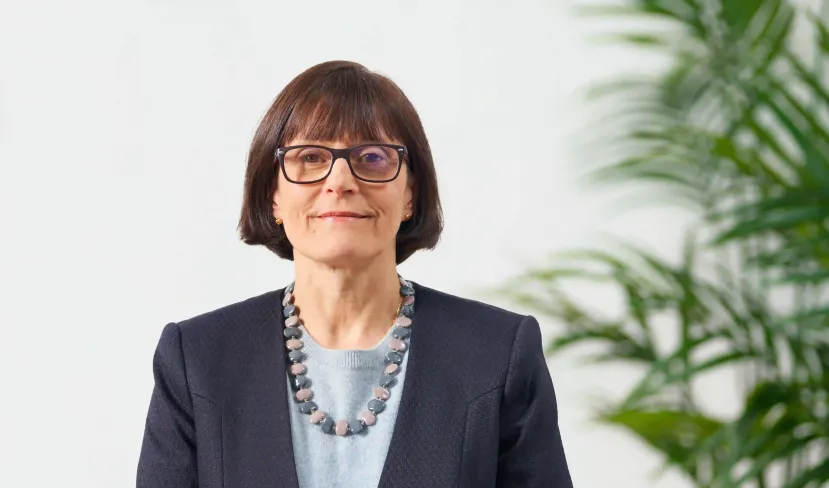The Thomas Murray Advisory team provides expert advice on the appointment of a global custodian, including the key terms that distribute risk between the parties in the global custody agreement. This agreement is key to determining the commercial balance of risk between the custodian and the client, a balance that is shaped by market practice and evolving regulation. Financial regulators expect the custodians to enter into agreements that are clear and unambiguous, providing certainty of responsibilities in the event of a dispute.

With the appointment of every global custodian there needs to be a legal document setting out the terms on which the custodian provides the services (along with the many other terms that regulate the relationship). At the point of selecting a new custodian, or reviewing your existing arrangements, it is important to factor in the need to review the agreement.
While negotiating pricing and agreeing on service requirements are key steps in the process, it is the agreement itself that will bring this all together and provide the necessary protections for your organisation. The temptation to hand it over to the lawyers and leave them to negotiate it may be understandable, but it is key that the business owners take an active engagement in the negotiation.
In practice, although it is rare for legal disputes to arise that result in the parties relying on the agreement, it is an uncertain world and getting certainty of contract is essential to manage the risk. The agreement must be there to protect the assets in the event that something goes wrong down the line.
It is important to consider what is really important to your organisation, and how far the industry has moved in recent years as changes in global regulations and risk assessments shape the terms under which the global custodians are prepared to engage.
Another important task is keeping the schedules to the agreement up to date, whether they contain agreed service levels or information about the funds covered by the agreement.
We have identified a few key questions to ask when approaching the appointment or re-appointment of your global custodian.
When in the process should I start talking about the legal agreement?
The answer to this question is: As early as possible in the process of reviewing your global custodian. It’s all about negotiating leverage and making sure your requirements are set out to the custodian clearly and near the start of the process. If key contractual terms can be agreed as part of the selection process, then the negotiation will be quicker and easier once the custodian has been selected.
It is also important at this point to ensure that the custodian provides a complete set of legal documents. These would need to be completed to govern the range of services being used. There are often separate documents for the provision of value-added services, so understanding the holistic contractual position is important in managing the risk.
Who should negotiate the legal agreement?
Many organisations fail to appreciate the importance of having the business owners lead the contract negotiation. That doesn’t mean that the owners must be legal experts, but it is important to consider each clause in the context of your business, and how it could be interpreted in the event that the legal agreement has to be relied upon.
Not only should the business owners lead for the organisation, but they should also make sure that the custodian provides access to a decision maker for negotiating the important points. It is, after all, the business that must face the consequences of an agreement that does not consider all future scenarios and may leave it exposed.
In-house legal teams are well placed to negotiate the agreement with the custodian’s lawyers because they usually have a good understanding of the business. If you decide to use external lawyers, you can prepare negotiating guidelines that set out the business’s priorities, and some of the key commercial terms that you would like reflected in the agreement.
The provision of global custody is a niche area of banking that has developed its own set of market norms and not all external lawyers will be close to the industry. Having an expert in current practices to provide subject-matter expertise can save much time and cost during the negotiation process.
Who are the parties to the agreement?
This is usually a simple question to answer, but for some entities acting in multiple capacities it is important that the agreement is drafted to make it abundantly clear whose assets are going to be held and serviced under it.
It is important, too, for the custodian to have a clear understanding of the client’s entities for whom the assets are being held up front, so that regulatory and practical factors, such as partial termination, can be taken into account in the drafting.
One area to be especially clear about is in relation to special purpose vehicles (SPVs) that might have been set up to hold private market assets. These types of entities often need the ability to hold short-term cash instruments in custody, and will need the ability to process cash movements. Make sure that the custodian can facilitate these requirements under the custody agreement as, if not, they might have a separate type of agreement that needs to be considered.
What happens when I want to terminate the agreement?
This might not be front of mind when entering into a new relationship with a global custodian, but there will likely come a time when you need to consider changing service provider. This might be driven by future M&A activity, changed requirements for your organisation, or just a lack of satisfaction with your current provider. Vital considerations include:
- Do I want a fixed term
- How much time would I need to move to a new provider if the custodian terminated my agreement?
- How much notice would I want to terminate the agreement with, if there was a pressing need to switch to a new provider?
- Do I need to have the right to partial termination?
These are decisions that the business needs to make, with the lawyers then ensuring that the drafting reflects the business’s needs.
What should I be asking for when it comes to liability?
Different custodians will have different risk tolerances, and this can be shaped by things such as how they manage their own network of subcustodians. A custodian who can pass some risks on to a subcustodian may be prepared to accept a higher level of liability for losses incurred by the client. A custodian with affiliated subcustodians will be able to manage the risk within the group, and custodians should always be prepared to stand behind their affiliates that are providing the services.
Within the EU, the Alterative Investment Fund Managers Directive (AIFMD) and its subsequent translation into local law was the first regulation to define the level of liability a depositary bank should take for the loss of securities. While the direct impact of this was on the mutual fund industry, it also set a precedent for the contractual standards a global custodian should be assuming for the risk of loss of securities. It is also a good benchmark against which to assess an organisation’s custody agreement.
When should the agreement be signed and become effective?
Given the fact that the process for transferring to a new custodian can take anything from three to 12 months, depending on the complexity of the portfolio, the negotiation of the legal agreement usually takes place in parallel to the transition planning.
It is a regulatory requirement for the agreement to be signed before the assets move to the custodian, but how long before the transition should the agreement be in place?
Until the agreement is signed, there is no binding obligation on either party to make the appointment. This can be seen as a risk as both parties are applying considerable resources to make the transition happen when, in fact, something could change that prevents the project proceeding. An example of this could be a client change at corporate level, such as a merger, which might put the project at risk.
From the custodian’s perspective, there should be nothing to stop the appointment proceeding, and in practice it is rare for a project to fail to proceed to implementation. However, it is worth considering how far in advance of the planned transition you wish to ensure certainty through the execution of the agreement.
Conclusion
The custody agreement regulates the key risks in holding securities and cash with a global custodian. It is rare for a dispute to arise that requires the parties to rely on the agreement but, in times of financial stress or uncertainty in the markets, it is a critical tool to protect the assets of the organisation from loss, and the potential detriment to underlying clients and investors.
Thomas Murray can help you to navigate the review and negotiation of custody agreements, bringing in-depth knowledge of the industry standards and expectations as to how that risk should be allocated. With decades of experience in financial services, we are uniquely positioned to help asset and fund managers to address every aspect of risk in this highly specialised industry.



Orbit Intelligence
Centralise your monitoring and reporting, access Thomas Murray risk assessments and third-party data feeds.
Insights

Ransomware at Europe’s Airports: Case for Community-Driven Third Party Risk Management
The recent ransomware attack on Collins Aerospace’s Muse software, which brought chaos to airports across Europe, serves as a stark reminder of a critical gap in how organisations approach Third Party Risk Management (TPRM).

Enterprise risk management: Its unique role in financial market infrastructures
Enterprise risk management (ERM) is a comprehensive, systematic approach to identifying, assessing, managing, and monitoring an organisation’s risks.

Regulating Australian financial services: Meet APRA Standard CPS 234
APRA Standard CPS 234 is a prudential standard created by the Australian Prudential Regulation Authority (APRA).

The three lines of defence model and third-party risk management
The ‘three lines of defence model’ is widely recognised in the world of audit as an effective framework for risk management and internal control.


